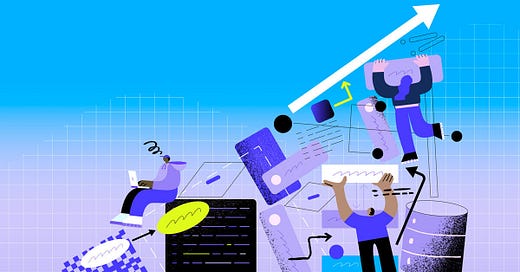The Real Story Behind Technical Debt: It's Not About Laziness
Technical debt comes in two flavors—intentional and unintentional—and both require different approaches.
👋 Hi, this is Thomas, with a new issue of “Beyond Code: System Design and More”, where I geek out on all things system design, software architecture, distributed systems and… well, more.
QUOTE OF THE WEEK:
“In a distributed system, there is no such thing as a perfect failure detector.
We can’t hide the complexity […] our abstractions are going to leak.” - Peter Alvaro
When people hear "technical debt," they often imagine corner-cutting or negligence by a development team. The reality, though, is rarely that simple. Technical debt is a natural byproduct of decision-making in software development, born from the relentless trade-offs we navigate every day.
Sometimes, technical debt is a strategic choice, consciously incurred to meet a deadline or seize a market opportunity. Other times, it’s accidental, lurking beneath the surface until it rears its head during critical moments. Either way, understanding its origins is key to managing it effectively.
Software development rarely follows a linear, predictable path. Requirements shift, deadlines tighten, and unexpected challenges arise. These dynamics mean technical debt isn’t about individual missteps—it arises from both intentional or unintentional decisions.
1. Intentional Technical Debt: The Strategic Compromise
Intentional technical debt happens when teams knowingly make trade-offs. These are calculated decisions, often to deliver critical business value quickly. For example, skipping exhaustive test coverage to launch a competitive feature might be worth the risk—if you plan for remediation later.
💡 Example: A startup rushes to release a beta version, choosing simplicity over scalability. The team documents the trade-offs, planning to refactor once user feedback solidifies the product direction.
2. Unintentional Technical Debt: The Silent Accumulation
Unintentional technical debt is harder to detect. It creeps in through architectural drift, unclear communication, poor system design practices, evolving system requirements, or inexperience. Often, teams only discover it when they face inexplicable challenges during maintenance or feature development.
💡 Example: Junior developers unknowingly implement inefficient database queries. Over time, this impacts performance, leading to escalating user complaints and costly refactoring.
Here’s a quick breakdown:
How to Tackle Technical Debt
While intentional debt often carries known risks and planned solutions, unintentional debt might spread throughout the system, creating complex dependencies and requiring more extensive remediation efforts.
Addressing technical debt requires acknowledging its diverse forms and tailoring strategies accordingly
For intentional debt:
Document trade-offs made during development.
Allocate time for planned refactoring sessions.
Communicate risks clearly with stakeholders.
For unintentional debt:
Conduct regular system audits to uncover inefficiencies (or use tools to automatically discover and document your system)
Invest in team education to prevent recurring mistakes.
Improve processes to align evolving requirements with architectural decisions.
Ultimately, technical debt is not a badge of failure—it’s a reality of modern software development. What separates effective teams from the rest is how they identify, manage, and address it. By understanding the nature of the debt you’re carrying, you can balance innovation with sustainability and keep your systems—and teams—healthy.
I originally wrote about this topic in this article:
I explored these topics:
What is technical debt?
Types of technical debt (e.g. Architectural debt, Code-level debt, Test debt, Documentation debt)
Real-world technical debt example
📚 Interesting Articles & Resources
Focus on Building Resilient Interactions, Not Just Resilient Services -
Resilient interactions in distributed systems prioritize handling failures gracefully to maintain system reliability. Instead of perfect reliability in each service, the focus should shift to designing robust interactions between services using retries, timeouts, circuit breakers, and fallbacks. These strategies ensure fault tolerance, improve user experience, and mitigate cascading failures.
System Design: What is Service Discovery? -
Service discovery in distributed systems ensures seamless communication between services by dynamically identifying service locations. It can be centralized using tools like Consul or Zookeeper or decentralized with peer-to-peer models. Effective service discovery improves scalability and fault tolerance but requires careful management to handle challenges like stale service registrations or network partitions.
You Want Modules, Not Microservices - Ted Neward
The article traces back the origins of microservices and highlights how they are often overhyped and their benefits misunderstood. Many advantages attributed to microservices, like scalability and independent team development, can also be achieved through modular architecture.




